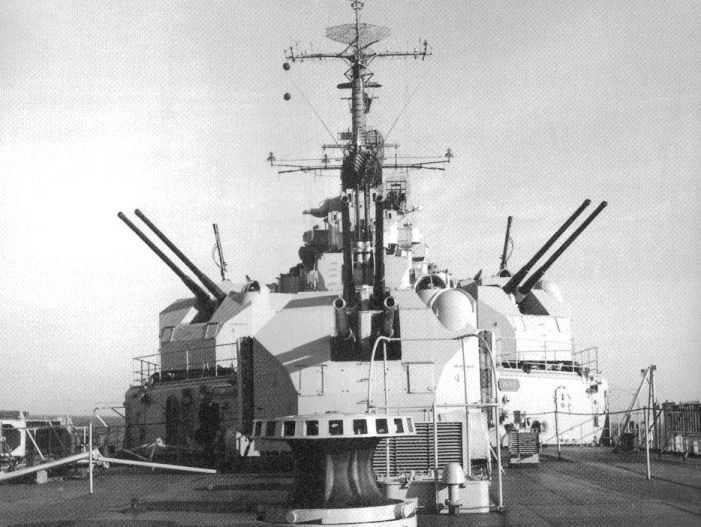
This was the standard major-caliber AAA weapon of the Marine Nationale during the 1950s and was used on many cruisers and destroyers. It was a completely new design that took advantage of the availability of US ammunition for both surface and anti-aircraft uses. The design was significant in that it was the first high-angle destroyer mounting ever used by the French, reflecting hard-earned experience gained during the war that destroyers lacking DP armament were highly vulnerable to aircraft attack.
Essentially it was a dual-purpose development of the prewar twin 130mm mounting that featured in the Le Hardi class, but with a slightly reduced calibre to enable it to fire US Navy ammunition – it was originally designed as a 130mm-calibre weapon. French sources give a figure of 11 personnel per mounting, which is comparable to prewar standards, and the mounting is described as 'heavy and over-complex'; it failed to meet its designed rate of fire of 15rpm per gun reliably, and modifications were necessary before the gun was accepted into service. It was superseded by the single 100mm in the mid-1950s.- John Jordan
| Designation | 127 mm/54 (5") Model 1948 |
|---|---|
| Ship Class Used On | Surcouf (T47), Duperré (T53), De Grasse and Colbert classes |
| Date Of Design | 1948 |
| Date In Service | 1956 |
| Gun Weight | N/A |
| Gun Length | N/A |
| Bore Length | About 270.0 in (6.858 m) |
| Rifling Length | N/A |
| Grooves | N/A |
| Lands | N/A |
| Twist | N/A |
| Chamber Volume | 825.38 in3 (13.525 dm3) |
| Rate Of Fire | 15 rounds per minute as designed, somewhat less in practice |
| Type | Separate |
|---|---|
| Projectile Types and Weights | See table below |
| Bursting Charge | See table below |
| Projectile Length | N/A |
| Propellant Charge | 18.5 lbs. (8.188 kg)
Cartridge: 34.1 lbs (15.5 kg) |
| Muzzle Velocity | HC: 2,650 fps (808 mps) 1 |
| Working Pressure | 18.5 tons/in2 (2,758 kg/cm2) 1 |
| Approximate Barrel Life | N/A |
| Ammunition stowage per gun | De Grasse and Colbert: 300 rounds
Others: N/A |
| Type | Shell Weight | Charge |
|---|---|---|
| AAC Mark 41 | 69.45 lbs. (31.505 kg) | 7.75 lbs. (3.515 kg) |
| HC Mark 41 | 69.33 lbs. (31.448 kg) | 7.75 lbs. (3.515 kg) |
| Illum Mark 48 | 69.2 lbs. (31.389 kg) | Parachute Flare |
| HE Com Mark 42 | 70.00 lbs. (31.751 kg) | 2.14 lbs. (0.971 kg) |
| VT Mark 41 | 69.19 lbs. (31.384 kg) | 7.87 lbs. (3.570 kg) |
| Elevation | Distance |
|---|---|
| 45 degrees | 24,060 yards (22,000 m) |
| AA Ceiling @ 85 degrees | 29,530 feet (9,000 m) |
Although this weapon used standard USN 5"/54 (127 mm) ammunition, its stated range was significantly less than that for USN 5"/54 (12.7 cm) guns for unknown reasons. It is possible that the range is for "average gun" velocities rather than for "new gun" velocities.
| Designation | Twin Mounts
Surcouf (3) 1a, Duperré (3), De Grasse (8) and Colbert 2a (8): Model 1948 |
|---|---|
| Weight | 48 tons (49 mt) |
| Elevation | -10 / +80 degrees |
| Rate of Elevation | N/A |
| Train | about -150 / +150 degrees |
| Rate of Train | N/A |
| Gun Recoil | N/A |
- ^Five destroyers of the Surcouf class were rearmed with 100 mm Model 1968 guns during the late 1960s and early 1970s.
- ^All 127 mm guns were removed from Colbert when she was converted to a missile ship between 1970 and 1972, being replaced with a Masurca missile system and two 100 mm Model 1968 guns.
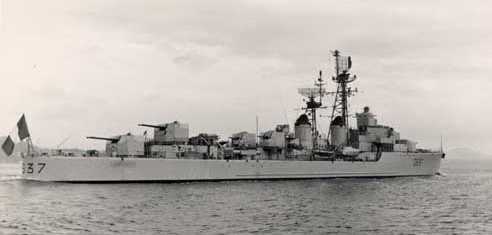
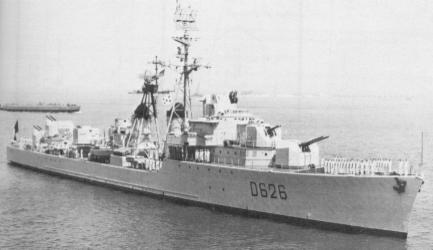
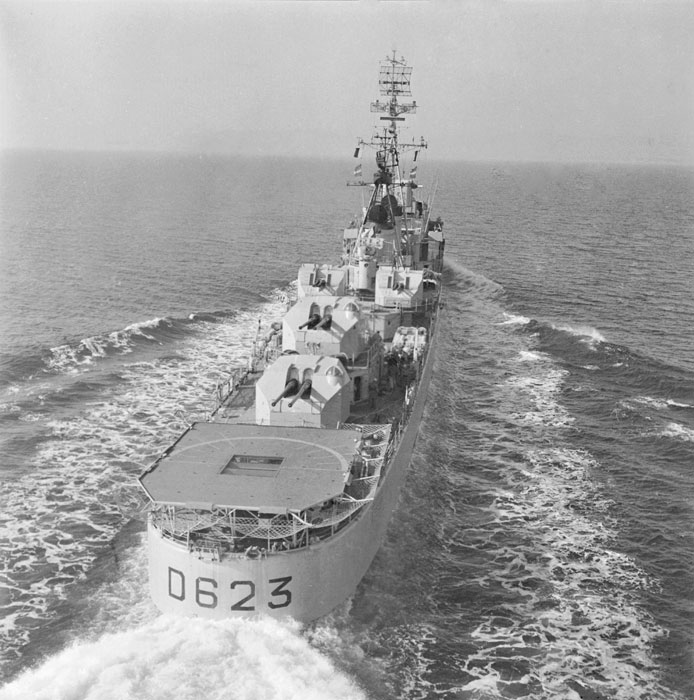
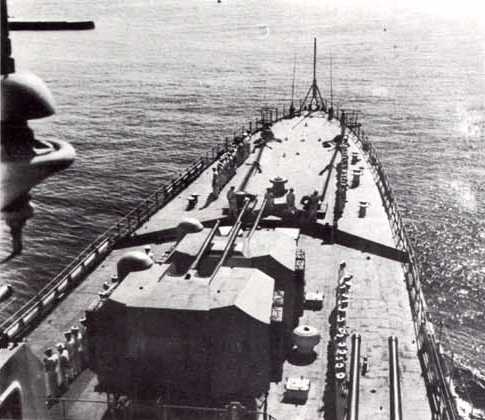
"Naval Weapons of World War Two" by John Campbell
"The Naval Institute Guide to World Naval Weapon Systems 1991/1992" by Norman Friedman
"French Cruisers: 1922 - 1956" by John Jordan and Jean Moulin
"Surcouf: The French Postwar Destroyers" articles by John Jordan in "Warship Volume IX"
---
Ministère de la défense
23 July 2007 - Benchmark
03 March 2012 - Updated to latest template
06 April 2013 - Added ammunition details and photographs of De Grasse and Cassard
11 October 2019 - Converted to HTML 5 format, corrected typographical error
04 November 2020 - Added John Jordan quote
